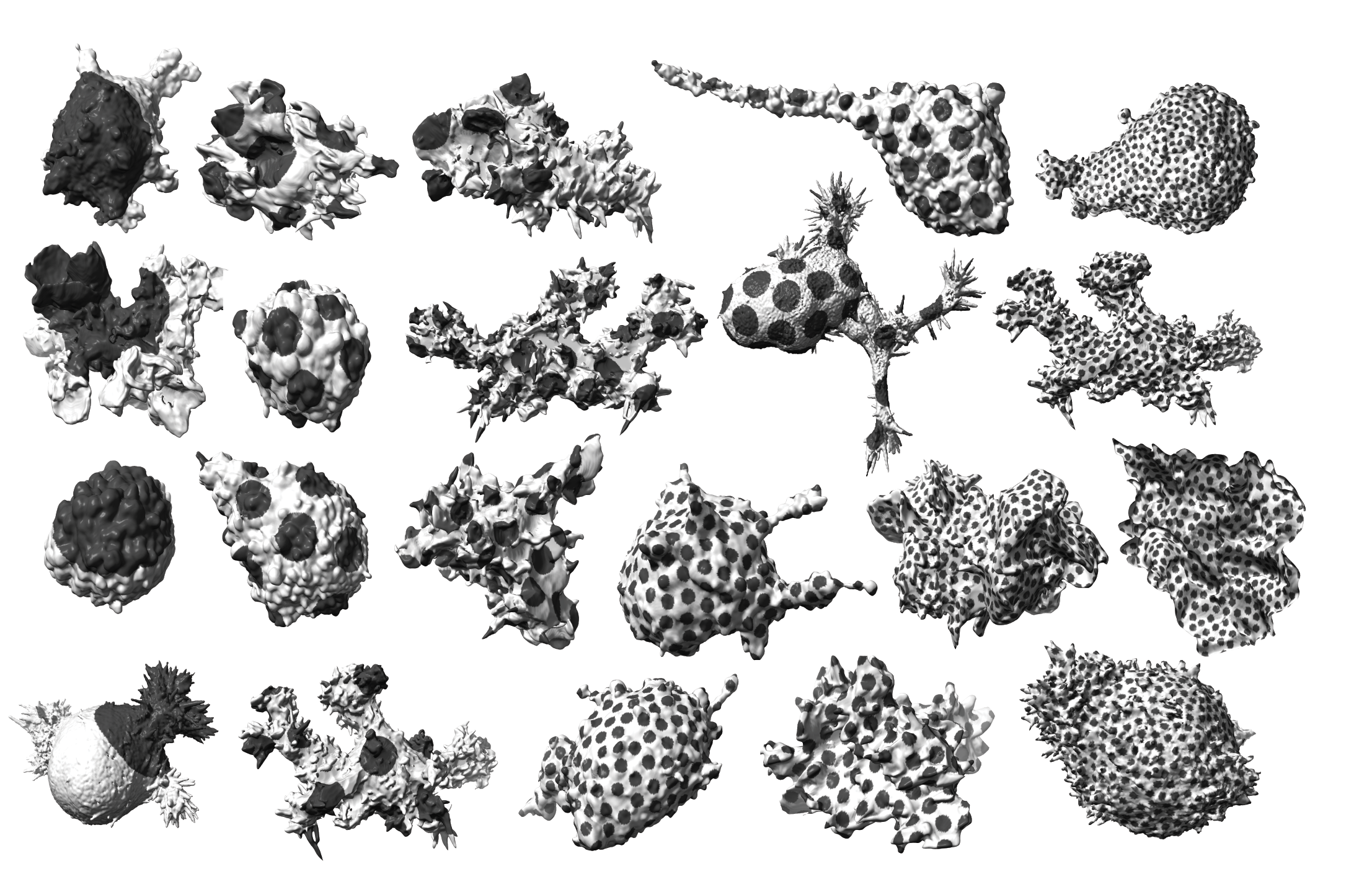When cells catch the measles
Molecules organize at the cell membrane to control many signaling pathways. These organizations range from nano- or microscales to the size of the cell. They are often associated with different cell states, underscoring the importance of measuring the 3D arrangement of molecules at the cell membrane. Recent developments in light microscopy enable the visualization of localization and activation of membrane-associated molecules, yet there has been a lack of a quantitative framework to characterize these distributions. Finding whether a distribution is qualitatively the same or different between two cells is challenging, because the distributions seem to vary with the difference in cell shape. In recent work, published in Nature Computational Science, Mazloom-Farsibaf et al. introduced a computational framework to assess the molecular organizations at the cell membrane in a shape-agnostic manner. Using the Laplace-Beltrami Operator, cell geometry defines a complete set of frequency-based functions, called cellular harmonics. Given molecular organizations on the cell morphology, these patterns are decomposed into the harmonics, measuring their distinct spatial scale signatures. To validate the reliability of this framework, cell surfaces were painted with polka dot patterns mimicking molecular organizations. The analysis demonstrated that as the number of dots increased, spatial scales of patterns are shifted from low to high frequency levels of the spectra, regardless of the cell shape. The work then goes on to leveraging this capacity in quantifying diverse properties of molecular organization and cell signaling. The paper comes with a software package for easy operation of the pipeline. Overall, this framework enables to quantitatively compare the cell surface signals over time, or across a cell population, and even within an individual cell under different perturbations.
We also wrote a Research Briefing article: Measuring three-dimensional organization on cell surfaces with cellular harmonics
